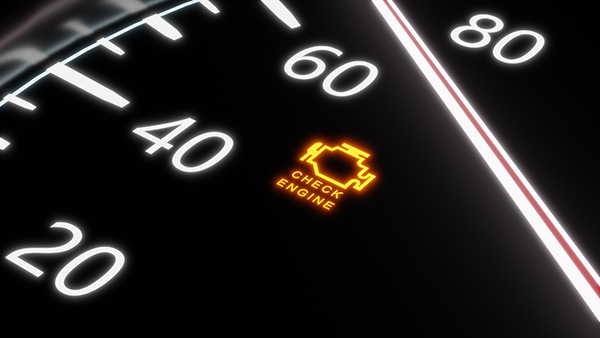
A quiet drive can turn stressful the moment that little orange light appears. The car still runs, yet you do not know what is happening under the hood. Some problems can wait for a planned visit. Others need attention right away.
Knowing the difference keeps you safe and prevents a minor fault from turning into a big repair.
What the Check Engine Light Really Means
Your engine computer watches dozens of sensors and compares their signals to expected ranges. When a reading goes outside that window, it stores a code and turns on the light. The code points to a system that needs testing, not to a guaranteed bad part.
A proper diagnosis looks at live data, freeze frame details, and how the engine behaves under load. That is how you find the root cause instead of guessing.
Solid vs. Flashing: Know the Difference
A solid check engine light means the computer has found a fault that affects emissions or drivability but is not likely to cause immediate damage. You can usually continue normal driving, then schedule service soon. A flashing light is different. Flashing warns of an active misfire that can send raw fuel into the catalytic converter.
If you keep pushing the car in that state, the converter can overheat and fail. Ease off the throttle, avoid high load, and plan to have the vehicle checked as soon as possible.
Common Issues You Can Check Quickly
A few simple checks can rule out the easy stuff while you plan a visit:
- Gas cap loose or seal dirty after a recent fill up
- Airbox lid not fully clipped after a filter change
- Visible vacuum hose slipped off an intake nipple
- Battery connections loose or corroded after a jump start
If the light appeared right after refueling, clean the cap seal, tighten it until it clicks, and drive a day or two. If the light clears, you likely found the cause.
When It Is Safe to Keep Driving
If the light is steady, the car runs smoothly, and there are no new sounds or smells, you can usually drive to work or home and schedule an inspection. Watch your gauges. Coolant temperature should stay normal. Oil pressure lights should remain off.
Avoid towing, steep climbs, and hot weather idling until the car is checked. Keep the trip short and easy. The goal is to prevent extra heat and stress while you plan service.
When to Park It and Call for Help
Stop driving if the light is flashing, the engine runs rough, or you hear knocking under load. Park if you smell strong fuel, see the temperature gauge rise, or notice the oil pressure light. Any combination of warning lights with a loss of power means the car needs a safe spot and a tow.
Continuing to drive risks damage to the converter, the turbo on equipped models, or internal engine parts. A short tow is cheaper than a major repair.
How a Proper Diagnostic Saves Money
Reading a code is only the first step. Good testing checks fuel trims to see if the engine is running rich or lean, smoke tests the intake and EVAP system for small leaks, and monitors sensor signals with a scope to catch intermittent dropouts. Techs also look at freeze frame data, which records engine load, speed, and temperature at the exact moment the code is set. That snapshot shortens the path to the real fault.
Replacing parts based on a code title alone leads to comebacks. Testing first prevents spending on sensors that are reporting a problem they did not create.
Problems That Trigger the Light Again and Again
Repeat lights usually point to missed basics. A cracked intake hose will set fuel trim codes until the leak is fixed. An aging battery can drop voltage on cold starts and confuse several modules at once. Worn spark plugs or coils cause misfires under load that come and go with humidity and temperature.
A sticky purge valve can trip EVAP codes after refueling. Fixing the actual cause stops the cycle of clearing codes and hoping for the best.
Simple Habits That Reduce Surprise Warnings
Stick to the oil specification and interval the engine needs. Replace the air filter on time so the mass airflow sensor stays clean. Inspect vacuum hoses during routine services. Use quality fuel and keep the gas cap seal clean. If the battery is more than four or five years old, have it load tested before winter or summer trips.
These small habits keep sensors reading correctly and make the computer happy.
Stay Road Ready with Eaton Automotive in Cottonwood, AZ
If your check engine light is on, bring it to Eaton Automotive in Cottonwood. We read the codes, capture freeze frame data, and test the systems involved so the fix is precise. You will get a clear explanation, options that fit your schedule, and repairs that stop the light from returning.
Call or book a visit online today and drive with confidence, knowing your engine is running the way it should.